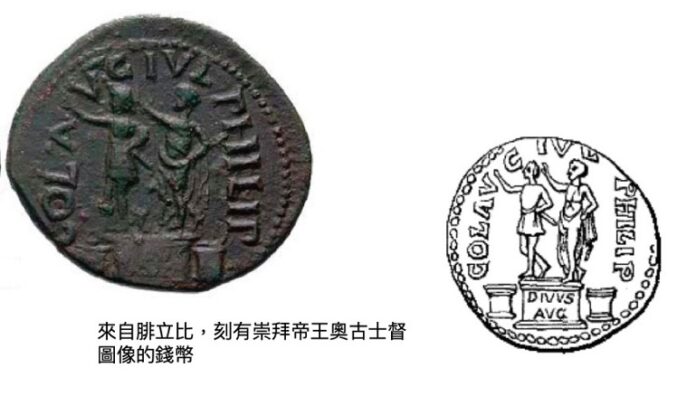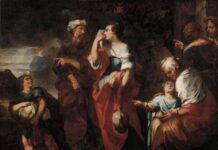Πολιτεύομαι,唔係咁樣解的 (2)
Πολιτεύομαι 在腓立比書同時包含三方面的意味。第一是政治效忠性 (political allegiance),第二是軍事對抗性 (military resistance),第三是神學辨識性 (theological discernment)。前二屬於希羅視角,第三則屬猶太。三者環環相扣,在「語意互動」(semantic interaction) 中共同創出 πολιτεύομαι 的意思。
第一種意味是政治效忠性,這與腓立比市獨特的歷史故事有關。位於馬其頓東部的腓立比,面積雖然不大,但卻是一個帝王之都,是一個「小羅馬」。原名「革連尼德」(Crenides) 的腓立比,其名就是因紀念馬其頓王亞歷山大的父親腓力而得。及後在公元前42年,羅馬帝國第一任皇帝屋大維 (Octavian, 後稱奧古斯都 Augustus) 在腓立比平原為義父凱撒 (Caesar) 報仇。1 既替「神」報仇,奧古士都就成了「神的兒子」。他的降生,正是出於神的差遣,為要撥亂反正,將和平重新帶給羅馬。腓立比亦「升呢」成為了奧古士都開創「時代革命」的象徵:
位於馬其頓東部的腓立比,面積雖然不大,但卻是一個帝王之都,是一個「小羅馬」
第一,政權將腓立比定位為「帝國殖民地」(Colonia Augusta Julia Philippensis) ,在市內建立帝王祟拜的祭壇,重建城市 (πόλις);其中羅馬公民亦能跟羅馬市的公民看齊,行使各樣公民權利。2
第二,處身「艾格那提亞大道」(Via Egnatia) 旁,腓立比實在位處一個兵家必爭之地。帝國亦將腓立比定位成「駐防城」,派遣羅馬士兵鎮守。
第三,奧古士又發行錢幣,在上除鑄上自己與維多利亞女神 (Victoria) 的名字之外,還刻上腓立比市得重建的圖像,成為帝國文宣的工具。3
第四,內戰前後,奧古士督(及安東尼, Mark Antony)亦將更多意大利 (Italia) 本土人及退伍軍人遷徙到腓立比,瓜分當地的土地權。部份原居民的權益因而受到傷害。
由此可推論,即便腓立比市內的人口組成不一定是羅馬人為主,被遷徙至腓立比的士兵亦可能各有自己的故事,但整體腓立比的主流敘事 (dominant narrative),卻很有可能是以崇拜羅馬帝國為主。4 事實上,根據考古學家在腓立比遺址的研究,越遠離市中心,以原居民刻印的碑文就越多,但接近市中心,碑文卻變成以拉丁文為主。每個市民 (πολίτης),都與生俱來地被灌輸一種向帝王效忠的意識形態 (ideology)。整體腓立比社會,就呈現一種鼓吹效忠羅馬帝王的「風」。就是這種「帝國烈風」,叫路加於《使徒行傳》,只將「羅馬殖民地」(κολωνία) 這稱號歸與腓立比 (cf. 徒16:12)。5 可見腓立比的「羅馬風」,很可能比其他保羅曾到之城市,更強更烈!
可見腓立比的「羅馬風」,很可能比其他保羅曾到之城市,更強更烈!
這樣看來,πολιτεύομαι 的意味,就遠超一般的「行事為人」或合神心意的生活了。保羅採用它,起碼會在腓立比信徒心中,喚起一個政治「現實」:市民應光榮地履行所屬城市憲章,向帝國表達效忠帝國。問題是,保羅究竟正在怎樣演繹這種「政治效忠」範式,去塑造腓立比信徒對基督國度的效忠?基督國度及羅馬帝國,又有什麼可能的關係?腓立比信徒能否同時效忠兩者?若說可以,是怎樣理解腓立比書當中的邏輯?若說不可能,又是建基什麼?保羅若不效忠帝國,是否就是叫人造反,要推翻羅馬帝國?保羅處身的獨特處境,又怎樣指導腓立比信徒的神學反思?
待續…
圖片:來自腓立比,刻有崇拜帝王奧古士都圖像的錢幣
若對以上參考的資料有興趣,可以聯絡我。
大家好,我是葉應霖。英文名是 Scott。希望您藉著呢個網更深認識神,別人及自己。
Footnotes:
- Edgar M. Krentz, “Military Language and Metaphors in Philippians,” in Origins and Method: Towards a New Understanding of Judaism and Christianity: Essays in Honour of John C. Hurd, ed. John Coolidge Hurd and Bradley H. McLean (Sheffield: JSOT Press, 1993), 111–2; Lawrence Keppie, The Making of the Roman Army: From Republic to Empire (University of Oklahoma Press, 1998), 104–5; L. M. McDonald, “Philippi,” in DNTB, eds. Craig A. Evans and Stanley E. Porter (Downers Grove: InterVarsity Press, 2000).
- Craig S. de Vos, Church and Community Conflicts: The Relationships of the Thessalonian, Corinthian, and Philippian Churches with their Wider Civic Communities (Atlanta: SBL, 1999), 246; Krentz, “Military Language,” 112. With this privilege, Philippi was recognized as part of the Italy territory, which represents a much-distinguished location as compared to other eastern cities of the empire.
- Scholars have been aware of a special bond between the city Philippi and Octavian because of the city’s unique history and hence its unique capacity in portraying Octavian as the sole pioneer of a new world order, which serve as the background for the subsequent flourishing of the imperial cult in the city. For references, see Lukas Bormann, Philippi: Stadt und Christengemeinde zur Zeit des Paulus, NovTSup 78 (Leiden: Brill, 1995), 41–4; Peter Pilhofer, Philippi. I. Die Erste Christliche Gemeinde Europas, WUNT 87 (Tübingen: Mohr Siebeck, 1995), 42; Beth Severy, Augustus and the Family at the Birth of the Roman Empire (New York: Routledge, 2003), 34, 133–4; Harry O. Maier, Picturing Paul in Empire: Imperial Image, Text and Persuasion in Colossians, Ephesians and the Pastoral Epistles (London: T&T Clark, 2013), 50–1; John M. Jones, A Dictionary of Ancient Roman Coins (Los Angeles: Numismatic Fine Arts Intl., 1990), 623; Joseph H. Hellerman, “The Humiliation of Christ in the Social World of Roman Philippi, Part I,” BibSac 160 (2003): 333–6.
- Hellerman, “Humiliation, I,” 327–30.
- Acts 16:12; Joseph H. Hellerman, “The Humiliation of Christ in the Social World of Roman Philippi, Part II,” BibSac 160 (2003): 421–2.










